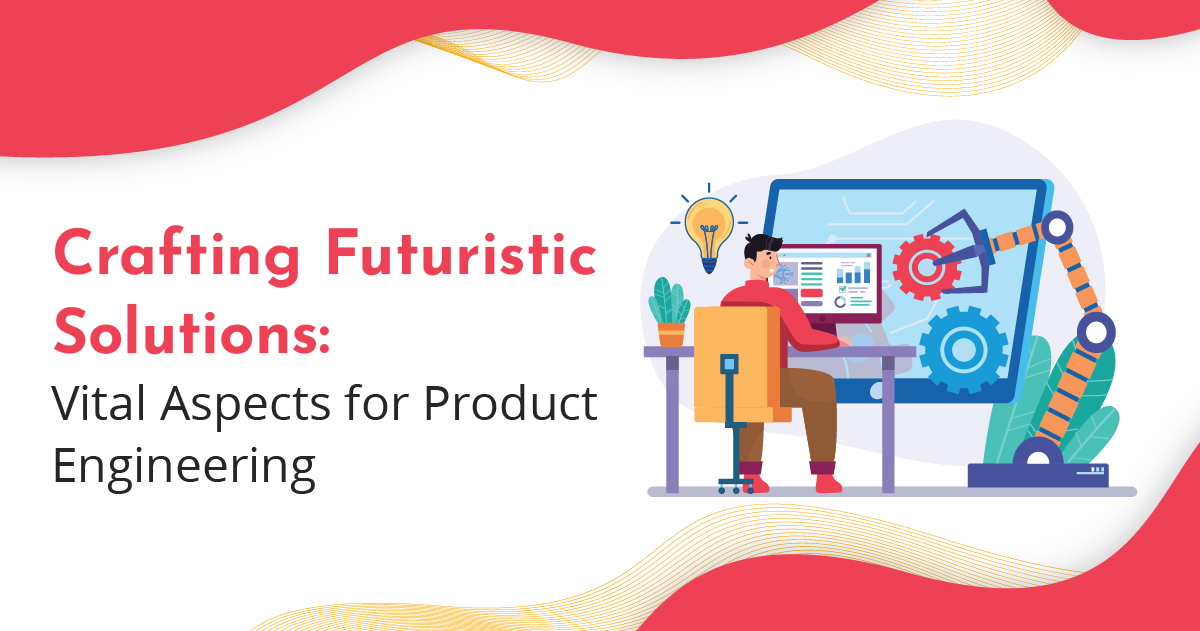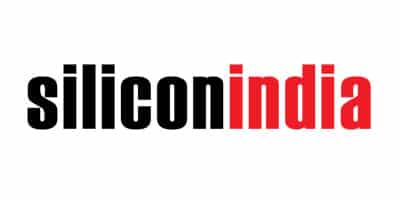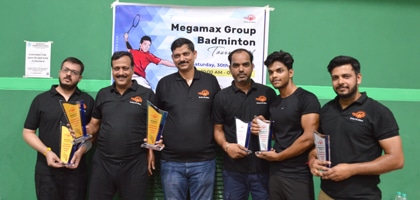The field of product engineering involves various essential aspects of a product. It includes its performance, usability, quality, cost, lifespan, reliability and serviceability. Remember, without the strategic aspects of product engineering, the product will just remain as an idea. This is why it is necessary to consider a crucial role in developing a product. The market size of a Product Engineering Services Market has reached a valuation up to USD 950 billion in 2022. Moreover, it is expected to reach a CAGR of over 5% by 2032.
To boost product development with sustainable solutions, businesses have to follow certain strategies. Product engineering has currently introduced product analysis. This enables the process of identifying and looking at disassembling the product and identifying the main features. The aim is to understand more about a product and improve the same in the future.
And in this path, there are various factors that highly influence product development engineering services. Let’s discuss it in detail;
Key Considerations and Solutions in Product Engineering
During the product engineering process, several important considerations are important to ensure success. Here are the highlighting concerns leading to futuristic solutions;
User-Centred Design
By conducting in-depth user research, businesses have to understand their end-user behaviour. They must incorporate user feedback in the entire development process. It is important to tailor-fit the product features to meet the audience’s needs and preferences. This will further increase customer satisfaction and product adoption. Microsoft Consulting Services Explained can help in product design planning. It is an in-person or virtual customer engagement to support and extend the Microsoft products’ customer usage.
Under user-centric design, focus on the following factors;
Performance Optimization
Businesses must focus on delivering a seamless user experience and conducting product performance optimization. This process will aid in efficient and swift performance. Moreover, it will improve responsiveness issues and loading times.
Improved Scalability
Along with optimization, businesses must consider the product’s ability to meet future generation’s demands. Make sure the products scale effectively and can handle higher user volumes well. In addition, it expands its feature sets.
With IT Infrastructure Management solutions, businesses will become more flexible and secure. Further, the business will become more capable of delivering end-user CX/UX with their product. Apart from this, it will help you work on faster response times to address operational changes and disruptive situations. The solution will result in proactive action with more agile processes. It will also bring in automation and improve capacity planning.
Enhanced Security Measures
Product development businesses have to integrate robust security measures with proven techniques and practices. This will ensure the protection of sensitive data and safeguard the product against possible cyber threats. With the product features, businesses must win the trust and confidence of users. The latest security measures in product development include encryption, vulnerability assessments and secure authentication. All these are applied in the IBM iSeries to offer better functionality to the users.
Here are the security measures for product development;
Continuous Integration/Continuous Deployment (CI/CD)
Businesses must implement CI/CD practices that will streamline the overall development process. It will further enable automated and frequent software releases. Further, it will reduce time-to-market and increase overall efficiency. In fact, CI/CD will ensure a smooth flow starting from product development to deployment. As per the State of CD report, around 47% of developers prefer to use CI or CD in some way.
Agile Methodologies
Businesses must leverage agile methodologies to enable iterative and flexible product development. It will further aid in quickly adapting to changing market demands and foster collaboration. Also, it will result in cross-functional teamwork.
Rigorous Testing and Quality Assurance
With continuous and thorough testing, a testing framework will be established that will encompass functional testing. Also, it will improve performance and user acceptance testing. All these will ensure that the software product, for example IBM iSeries meets the desired standards of functionality, quality, and usability.
Integration of Design and Engineering
We bridge the gap between creative ideas and technical implementation by integrating design and technology into digital product development, optimising workflows and fostering effective collaboration between teams.
Comprehensive Product Design
Product design requires a detailed understanding of your target customers. Moreover, it also includes careful consideration of feasibility, performance requirements and functionality. It will be a proficient way to design products. The design approach has five stages;
- Empathising with the target customers and understanding their preferences, main points, and goals.
- Defining the core challenges and issues in the product based on customer pain points.
- Ideating appropriate solutions for solving the challenges and problems.
- Creating prototypes with low fidelity for testing and refining the design process.
- Testing the prototypes to get insights necessary for design requirements.
This comprehensive design approach will help create successful product designs and test feasibility. However, another major aspect to keep in mind is design architecture, which determines how the different elements of the product interact. Along with this, the implementation of IT Infrastructure Management will improve the overall performance.
Identifying and Conducting Various Product Test Types
Unit testing
It is a testing process where each component of the products has individual units in two ways. For instance, “White box testing” and Black box testing.”
Integration testing
This testing determines whether different software modules are working together. Moreover, it will determine whether the product is communicating as expected.
System testing
This further verifies whether the software product meets various specified requirements in various scenarios.
Acceptance Testing
This testing process is a holistic way to check whether the software is meeting the customer’s expectations.
Regression Testing
Running both functional and non-functional tests on different versions of the product software will ensure that changes don’t break the application. Moreover, you can check backward compatibility issues.
Performance Testing
It evaluates the performance of the product under various conditions. The testing procedure includes checking higher loads and limited system resources.
Security Testing
This process ensures that your product is secure from every type of unauthorised access. This will also ensure that sensitive data is highly protected. The testing process also involves penetration testing, vulnerability assessments and security-related tests.
Usability Testing
The testing during the product engineering ensures that your software product is user-friendly and meets the user’s requirements. This process will involve user surveys, feedback sessions and user interface testing.
Exploratory Testing
It is the testing of software products without predefined test scenarios or cases. It will help you explore the whole system and attempt to find issues like bugs. So, whatever you missed in the above testing process will be done here.
Necessary Deployment and Maintenance
After extensive product testing, the next aspect is the deployment phase, which is highly important. Businesses have to figure out how to configure the delivery platform of their product to meet their customer expectations. It will further improve deployment efficiency, which is a crucial benefit of product development. Further, it provides a framework for deploying products across environments and ensuring high performance.
The product development process completes the development cycle with a maintenance phase. Here, the engineer will check and monitor the overall performance and predefined metrics. Also, you can go through the Microsoft Consulting Services Explained to get more solutions.
Monitoring and recording important events as users interact with the product will improve observability. Further, it plays a vital role in improving maintenance. It is even important to define roles and responsibilities at each stage of product development.
Final Thoughts
By considering all the above aspects of product engineering, business organisations can develop innovative and customer-centric products. Moreover, it will result in reliable products to meet both current and market demands. Moreover, it will drive business success and result in high-quality user experiences. Get in touch with Megamax Services and know how the express will help you in the product development process.










